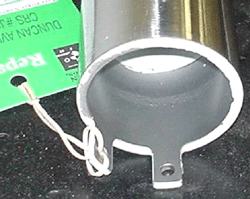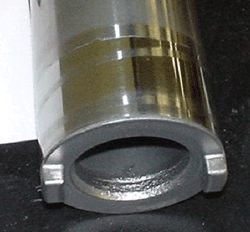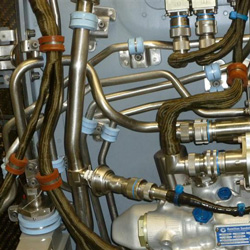 The Duncan Aviation Senior Completions Designer and Team Leader Mary Lee and Multi Media Illustrator Ken Reita worked together to find a way to give passengers more headroom in the lavatory of a Challenger 650.
The Duncan Aviation Senior Completions Designer and Team Leader Mary Lee and Multi Media Illustrator Ken Reita worked together to find a way to give passengers more headroom in the lavatory of a Challenger 650.
Using Mary’s designs and Ken’s 2D drawings, team members from the Interior, Cabinet, and Fabrication Shops extended the size of the vanity and shifted the toilet, making both more accessible to the business aircraft passengers.
In order to shift the vanity, it had to be resized, and that meant the original sink no longer fit. Team members in Duncan Aviation’s Fabrications Shop designed and machine-crafted a bigger sink from a solid piece of aluminum, where it’s now an eye-catching addition to the sleek new vanity.
Duncan Aviation has multi-shop capabilities, with experts who collaborate to conceive of, design, and craft nearly anything an aircraft operator needs. With experienced in-house engineers and certification experts, Duncan Aviation can also shorten downtimes by producing design data and STCs (Supplemental Type Certificates) when necessary.
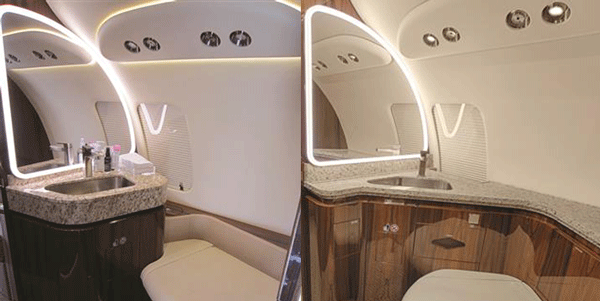
Lavatory: Before and After
The Engineering and Certification department developed an STC for the redesigned lavatory, and we’ve now completed four redesigns. The aircraft were completed in pairs: The first two were completed and delivered, and then the second two arrived for the redesign.
“Because our Interior Shops had already completed two, they were able to deliver the second two Challenger 650s early,” says Project Manager Darrell Miller.
In this video watch the Dufncan Aviation fabrication shop design and machine a bigger, sleek new sink out of a solid piece of aluminum so it would fit in the redesigned vanity.


 No detail, no matter how small, escapes the notice of Duncan Aviation team members. Earlier this year, a long-time customer from Jakarta, Indonesia, arrived with his company’s Challenger 604. To the casual observer, a custom-designed sink strainer is no big deal, but it was critical to Senior Financial Advisor for Air Pacific, Muliawan Sutanto, and the rest of the flight crew.
No detail, no matter how small, escapes the notice of Duncan Aviation team members. Earlier this year, a long-time customer from Jakarta, Indonesia, arrived with his company’s Challenger 604. To the casual observer, a custom-designed sink strainer is no big deal, but it was critical to Senior Financial Advisor for Air Pacific, Muliawan Sutanto, and the rest of the flight crew.
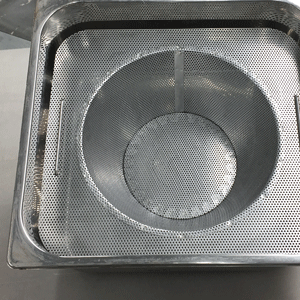










 Duncan Aviation recently received Supplemental Type Certification (STC) from the Federal Aviation Administration (FAA) for an industry-first Controller Pilot Data Link Communications/Future Air Navigation System (CPDLC/FANS) 1/A+ installation.
Duncan Aviation recently received Supplemental Type Certification (STC) from the Federal Aviation Administration (FAA) for an industry-first Controller Pilot Data Link Communications/Future Air Navigation System (CPDLC/FANS) 1/A+ installation. A near-record number of landing gear sets and components are in-house at Duncan Aviation’s accessories shop in Lincoln, NE.
A near-record number of landing gear sets and components are in-house at Duncan Aviation’s accessories shop in Lincoln, NE..jpg?width=315&height=207&name=bombardier-asf-award_2013(2).jpg)


